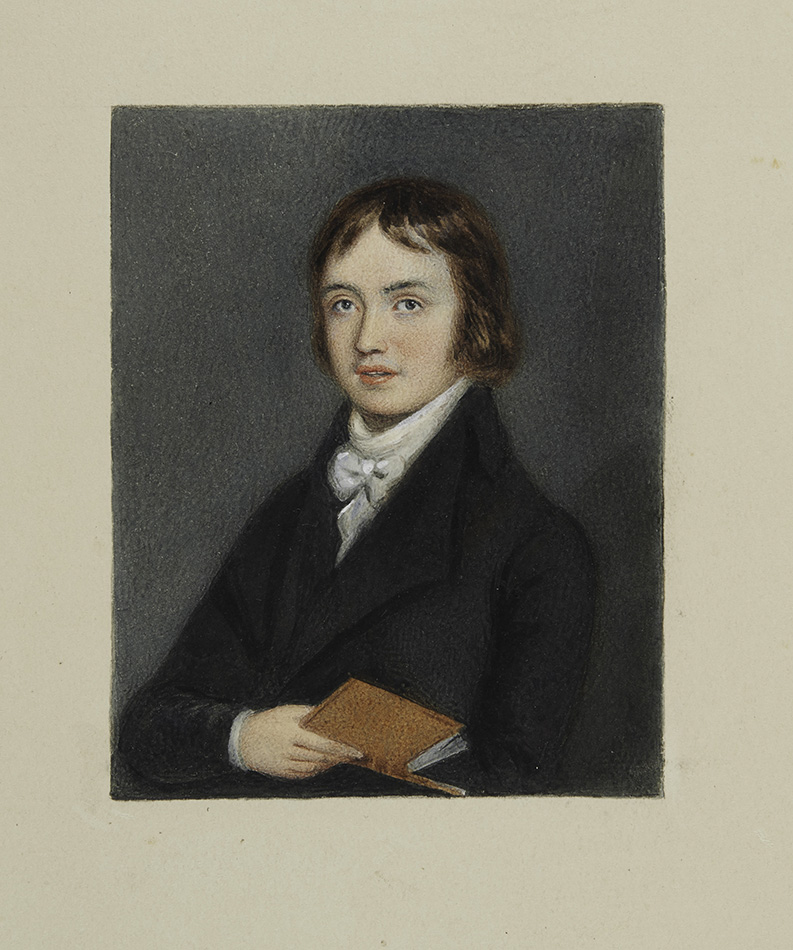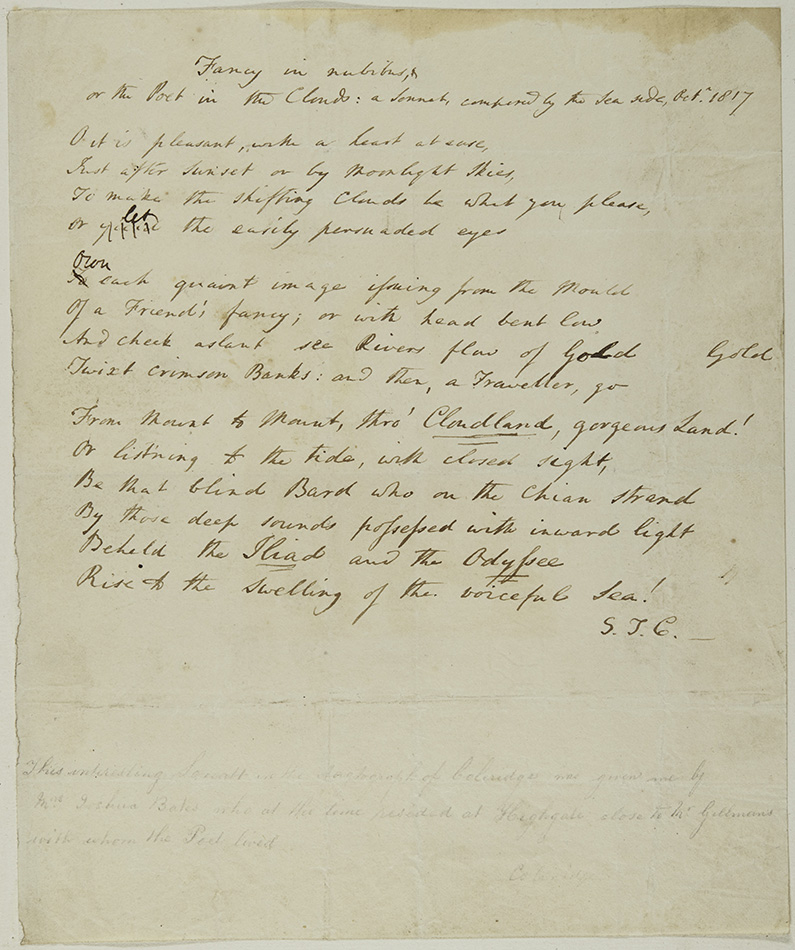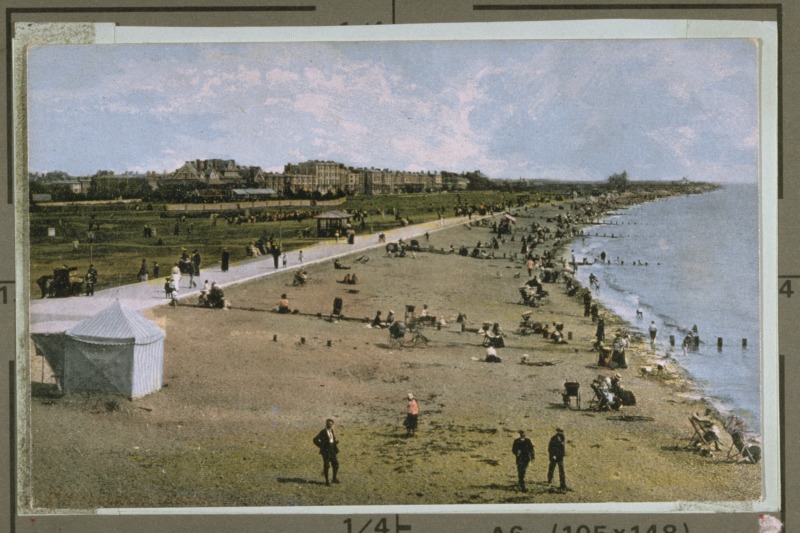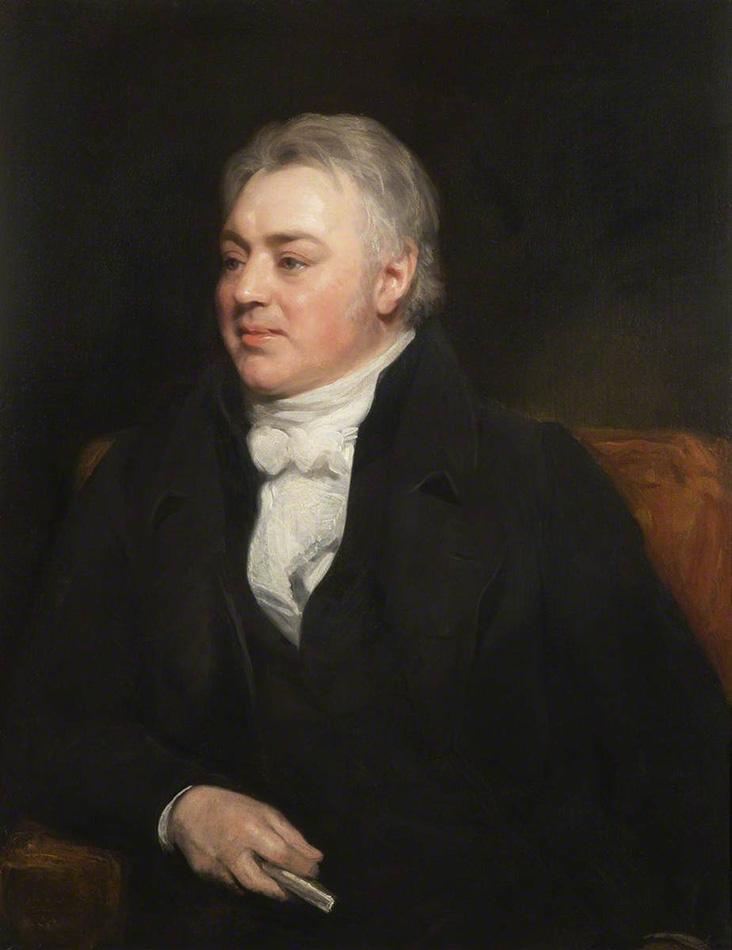Samuel Taylor Coleridge, ‘Fancy in Nubibus’, 1817
This week we present a manuscript of the sonnet ‘Fancy in Nubibus. Or The Poet in the Clouds’ by the poet, critic and philosopher Samuel Taylor Coleridge (1772-1834). The document is one of the highlights of the Marseille Middleton Holloway collection, recently entrusted to the University.
One of the major figures of English Romanticism, Coleridge began writing poetry at the age of sixteen, and continued until the year before his death. The period of his creative friendship with William Wordsworth inspired some of his best-known poems, from the nightmarish vision of the ‘Rime of the Ancient Mariner’ and the mysterious ‘Kubla Khan’.

This sonnet, ‘Fancy in Nubibus, Or, The Poet in the Clouds’ was written during a period of great productivity for Coleridge. It was Coleridge’s first sonnet for more than a decade and was published in The Courier, 30 January 1818. It was probably composed at Littlehampton in Sussex.

Coleridge described the circumstance of the composition of ‘Fancy in Nubibus’ in a letter:
“As I came in this evening after a glorious sunset a sort of lazy poetic mood came upon me and almost without knowing it I compos’d the following sonnet, which merely because it is the first Resumption of the Rhyming Idleness Mrs. G. will have me send you. It has one character of a Sonnet that it is like something that we let escape from us–a Sigh, for instance. I am so far onward with the Essay, in which I regret the good parts only, that I have little doubt it will be properly finished by this day week…”

A pencil note records that ‘This interesting Sonnet, in the Autograph of Coleridge was given me by Mrs Joshua Bales who at the time resided in Highgate, close to Mr Gillmans with whom the Poet lived’. In an attempt to control his opium addition, Coleridge had entered the household and care of his friend and benefactor Dr James Gillman at Highgate in 1816. He remained there for the last 18 years of his life, writing a number of poems and prose works there, especially in the garden. They include ‘Kubla Khan’, ‘Christabel’, his very touching ‘Youth and Age’; and a poignant sonnet, looking back at his drug addiction, ‘Work Without Hope’ (1825). In his last years he completed Aids to Reflection (1825), toured the Rhineland with William Wordsworth (1828) and wrote On the Constitution of Church and State (1830).

Gabriel Sewell
Assistant Director of Library Services (Special Collections)
[…] A deftly choreographed carol caroled by the most-gifted musicians in the known universe — a gift from the most aetherial sentient cloud ever to have dwelled ‘tother side of the troposphere (400 years in the aging, as it were). Fancy in Nubibus: https://standrewsrarebooks.wordpress.com/2018/08/22/samuel-taylor-coleridge-fancy-in-nubibus-1817/ […]